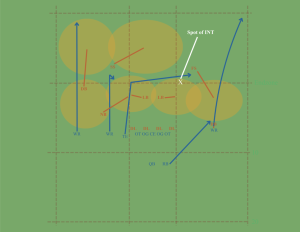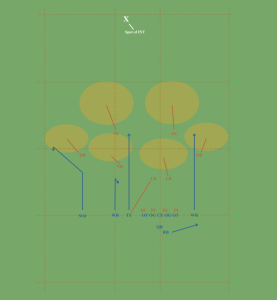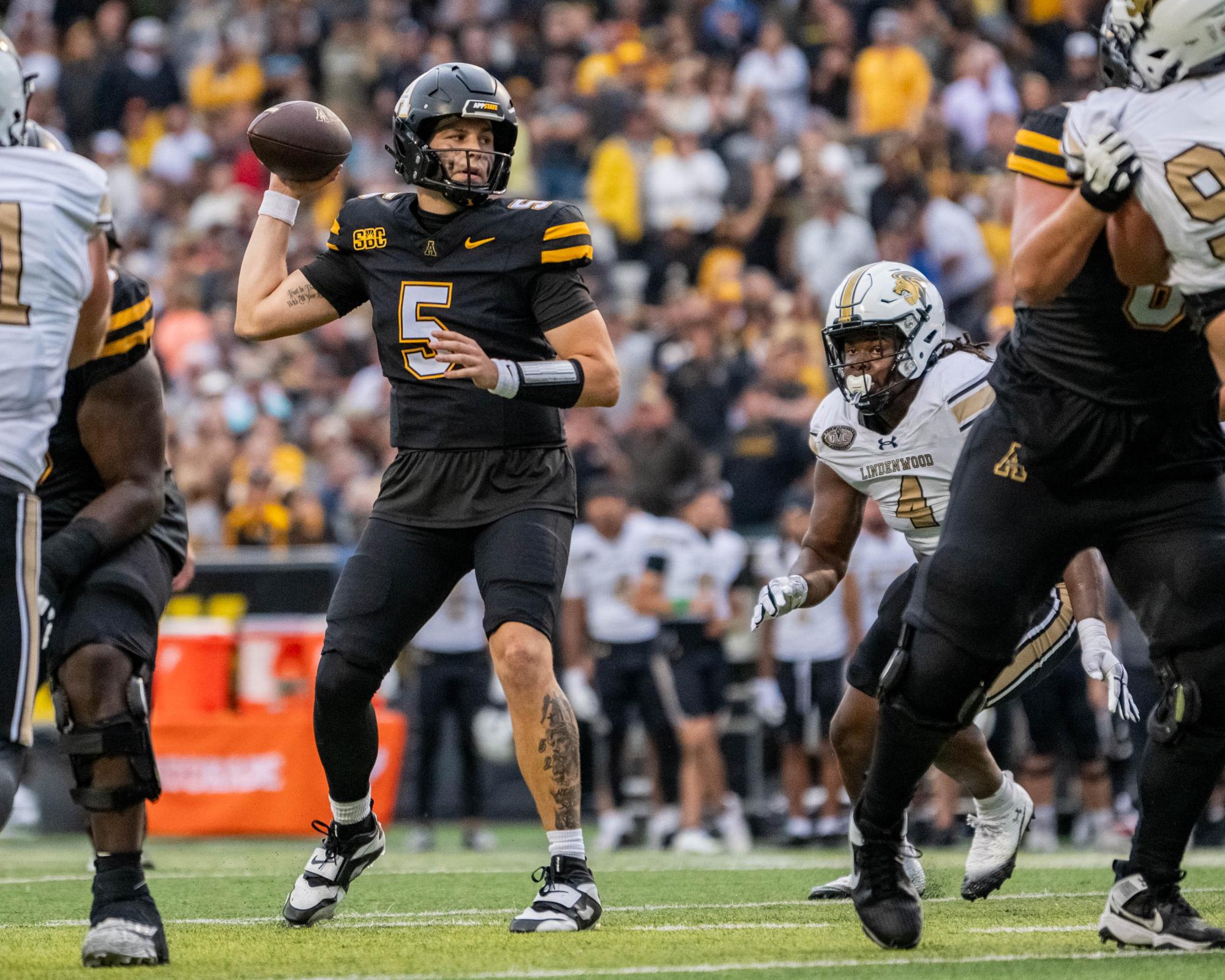Redshirt junior quarterback AJ Swann finished the Sept. 27 game in Boise, Idaho with 64 total passing yards, 1 touchdown and 2 interceptions, putting him third in the NCAA for interceptions at the time.
Swann’s play against Boise State noticeably highlights a facet in Swann’s skill; in just sixteen starts, between Vanderbilt University, Louisiana State University and App State, Swann has thrown 15 interceptions at 57.1% completion.
Against Boise State, as fans watched Swann continue to give the ball away in game-changing moments, an uncomfortable truth sprouted in the heart of the Mountaineer offense: Swann couldn’t keep the ball to himself.
To understand this, it’s important to understand the Mountaineer offense, its defensive matchups and what exactly creates a turnover.
Swann’s first interception of the season came against the Lindenwood Lions at home on Sept. 6. Swann’s interception against Lindenwood marked the second year in a row in which the Lions have forced an interception from a Football Bowl Subdivision opponent after picking off Kansas University quarterback Jalon Daniels last year. The Black and Gold turnover came at the hands of a modified cover two defense meeting an inaccurate Mountaineer passing play.

Cover two defenses put both safeties, shown as SS and FS; both defensive backs, shown as DB; the nickelback, shown as NB; and both linebackers, shown as LB, in zone coverage, a term used to describe when defenders are assigned particular spaces, or zones, on the field to defend, as opposed to specific players.
Lindenwood modified their cover two scheme by putting the strong side linebacker — the linebacker assigned to the side of the field with more players on it — in man coverage against redshirt senior tight end David Larkins.
Man coverage assigns defenders to cover certain players specifically. Larkins, who ran right up the middle of the field, ended up in double coverage because both the strong safety and linebacker covered him as he ran the deep route. Swann, seemingly attempting to exploit the size difference between Larkin and his two Lindenwood defenders, threw a deep ball pass, which sailed right over Larkin’s head and into the hands of Lindenwood safety Eric Gant.
The interception was not the fault of Larkin, who, despite double coverage, managed to maintain enough separation from his defenders to be considered open. The interception was also not the fault of the Mountaineers’ offensive line, which held strong and allowed Swann a nearly perfectly clean pocket. The interception stemmed entirely from a forced, overthrown ball in the face of a well-drawn defensive scheme.

The same kind of pass force was seen in Swann’s third interception against Southern Miss on Sept. 13. While Swann’s first 2 interceptions came at the hands of bad play from redshirt senior center Will Flowers and running back Rashon Dubinion, the third stemmed from Swann’s forced passing.
On third and goal, the Golden Eagles met the Mountaineer offense with a modified cover three, putting every defensive player in zone coverage except for Southern Miss cornerback Anthony Richard Jr., who was put in-man against redshirt senior wide receiver Dalton Stroman.
After the snap, Swann stepped back to pass as the pocket around him shrank rapidly. In an effort to save the play, he forced a pass to double-covered redshirt senior tight end Izayah Cummings, which was promptly intercepted by Southern Miss linebacker Mathis Haygood. The tight coverage around Cummings had both linebackers positioned in front of Cummings in the endzone, allowing virtually no chance that the pass to Cummings would be completed.
Swann tacked on 2 more turnovers against Boise State, which came at the hands of a superior Boise defense and repetitive play from Swann. With an interception over the middle and an interception at the sideline, Swann was benched with six interceptions in just four starts.
Even after App State’s matchups against Oregon State University, Georgia State University and Coastal Carolina University, which saw redshirt sophomore backup quarterback JJ Kohl take all offensive snaps, Swann is still tied for fifth in the NCAA in interceptions. Kohl, who’s gone 63-for-105 with 841 passing yards, 7 passing touchdowns and 1 rushing touchdown, has led the Mountaineers to a 4-3 record and their first victory over a Pacific Athletic Conference opponent in program history.
The Mountaineers, who had been top five in the NCAA in turnovers this season, managed to finish their last three games with no interceptions and just one fumble, showing that the offense can run smoothly and mistake free. The gauntlet of nonconference play for the Mountaineers is officially over as the team continues the rest of their in-conference play this Saturday against Old Dominion University. With Kohl having started the last three games and Swann staying on the bench, App State football seems to be moving in a new direction offensively.


